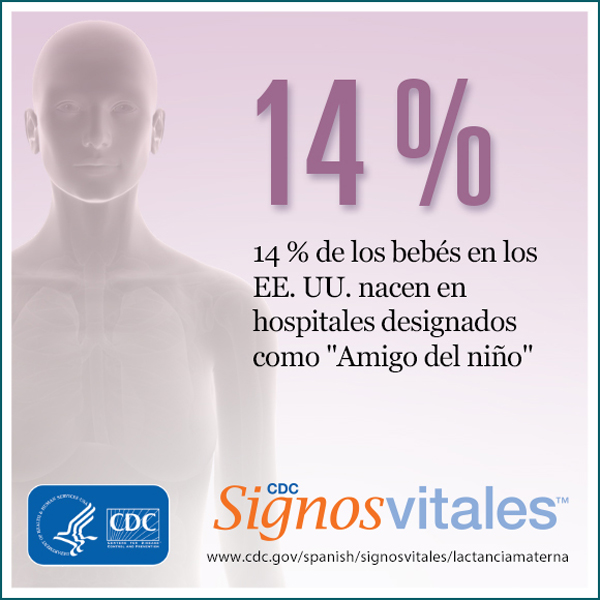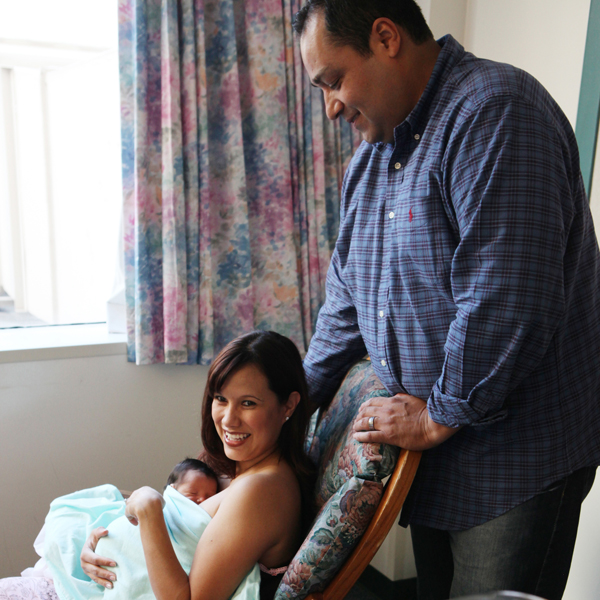Hospital Support for Breastfeeding
Hospitals play a vital role in supporting moms to breastfeed, and that support has improved. The percentage of US hospitals using a majority of the Ten Steps to Successful Breastfeeding, the global standard for hospital care to support breastfeeding, increased from about 29 percent in 2007 to almost 54 percent in 2013, a nearly two-fold increase in six years. Improved hospital care could increase rates of breastfeeding nationwide and contribute to healthier children.
Of the nearly 4 million babies born each year in the US, 14% are born in Baby-Friendly hospitals. This number has nearly tripled in recent years but remains low. The Baby-Friendly Hospital Initiative (BFHI) was established by the World Health Organization and UNICEF and endorsed by the American Academy of Pediatrics. The Ten Steps to Successful Breastfeeding are at the core of the BFHI.
To improve their support for breastfeeding, hospitals can:
- Use the Ten Steps to Successful Breastfeeding and work towards achieving the Baby-Friendly designation.
- Use CDC’s Maternity Practices in Infant Nutrition and Care (mPINC) survey customized reports to improve maternity care practices that support breastfeeding.
- Work with doctors, nurses, lactation care providers, and organizations to create networks that provide clinic-based, at-home, or community breastfeeding support for mothers.
Breastfed babies have reduced risks of ear, respiratory, stomach, and intestinal infections; asthma, obesity, and sudden infant death syndrome (SIDS). Mothers who breastfeed are less likely to get breast cancer, ovarian cancer, type 2 diabetes, and heart disease. Breastfeeding also saves money. More than $2 billion in yearly medical costs for children could be saved if breastfeeding recommendations were met.
CDC Media Relations
(404) 639-3286
media@cdc.gov

“What happens in the hospital can determine whether a mom starts and continues to breastfeed, and we know that many moms – 60 percent – stop breastfeeding earlier than they’d like. These improvements in hospital support for breastfeeding are promising, but we also want to see more hospitals fully supporting mothers who want to breastfeed. The Ten Steps help ensure that mothers get the best start with breastfeeding.”
Cria Perrine, PhD –
Epidemiologist, Nutrition Branch, CDC’s Division of Nutrition, Physical Activity, and Obesity
“One way to ensure infant health is to support mothers who want to breastfeed. Babies who breastfeed have reduced risks for ear, respiratory, and gastrointestinal infections. They also have a reduced risk of asthma, obesity, diabetes, and sudden infant death syndrome (SIDS). And mothers who breastfeed their infants are at reduced risk of breast and ovarian cancer, type 2 diabetes and heart disease.”
Kelley Scanlon, PhD, RD –
Nutrition Branch Chief, CDC’s Division of Nutrition, Physical Activity, and Obesity
- Press Release – Breastfeeding Support Improves in Many U.S. Hospitals
- MMWR – Vital Signs: Improvements in Maternity Care Policies and Practices That Support Breastfeeding — United States, 2007–2013 | [PDF-453KB]
- Vital Signs: Home | October 2015 Vital Signs | Fact Sheet [PDF-1.3MB] | Issues
- Vital Signs (Spanish): Home | October 2015 Vital Signs | Fact Sheet [PDF-2.7MB] | Issues
Podcast
- Vital Signs – Hospital Actions Affect Breastfeeding – English | Spanish
- Vital Signs – Hospital Actions Affect Breastfeeding [PSA – 0:60 seconds]













